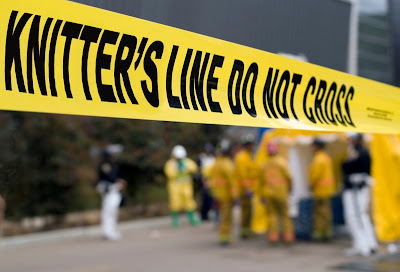
With which size of needles do you like more to knit?
1.The thicker, the better
2.The thinner, the better
3.It depends, according to the knitting project.
You knit mostly for…
1.To make beautiful things
2.To enjoy and occupy myself with beautiful yarns
3.To create beautiful things, using beautiful yarns.
During knitting…
1. the human eye, cannot conceive the movement of your needles, so fast you knit
2. you do not allow to be pressed and you knit with enjoyment row after row, because at last you want to enjoy your hobby
3. the speed of the knitting depends a lot on the project
Your first thought for the phrase “second sleeve”
1. Oh my God. NO. Another one?
2. how great, another one!
3. a knitter should do, what a knitter should do
During the making of a project, then…
1.you measure every 3 minutes, if your woolly has reached the regular length
2.you measure every 3 minutes, if you can still continue knitting
3.you measure, when you remember it
The sewing of the wooly is for you….
1. your terror and fear
2. part of my hobby
3. a necessary villain, when one wants to have a wearable piece.
Results
More 1s.
Congratulations! You are one of evident “process knitter”. You knit to knit, in order to relax and to have beautiful yarns “round your fingers”. And it is completely unimportant, when you will finish the project, and if it will be ever finished. This will be supposed to make you thoughtful only then, when the number of half-finished pieces is so much big, and you cannot anymore decide with which you continue.
More 2s.
Congratulations! You are one of evident “result knitter”. For you is only in effect the result-not the procedure. You knit always, often with horrible speed and are horribly productive. I envy you- because you have a genuine occasion, to really knit all these beautiful models.
More 3s.
Congratulations! You are a mixed type. You have the best from both 2 types! You like to knit, you are glad for the new piece, you enjoy however and the procedure of the creation. More cannot anyone ask from his hobby – unless of course, one will request you to knit black, simple socks. In Size 47. -
























